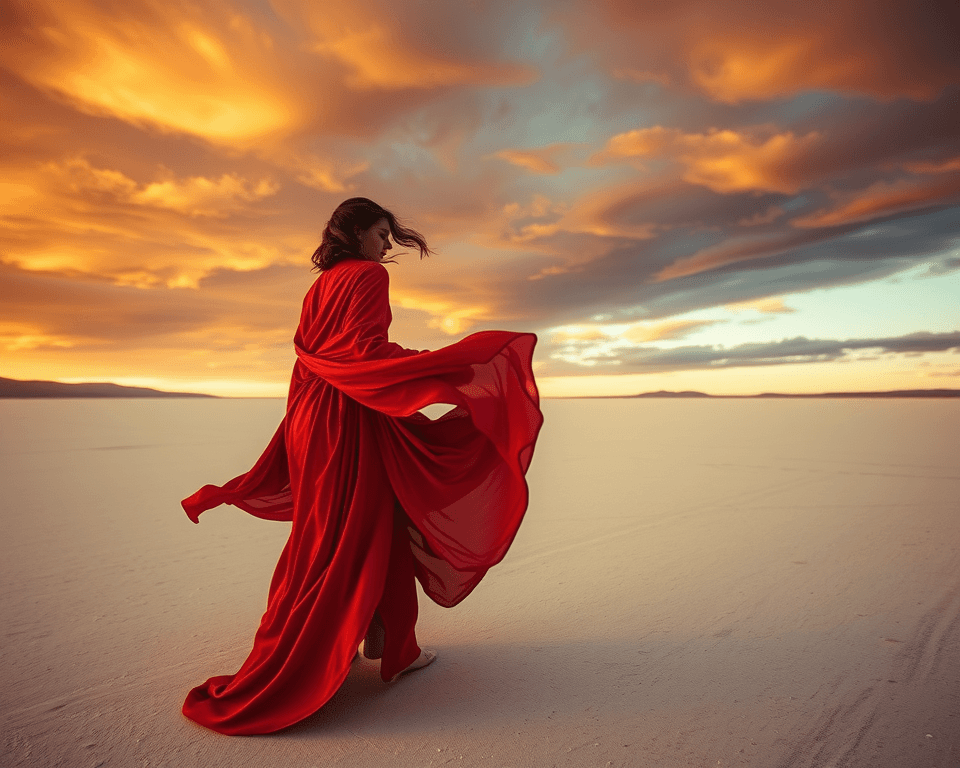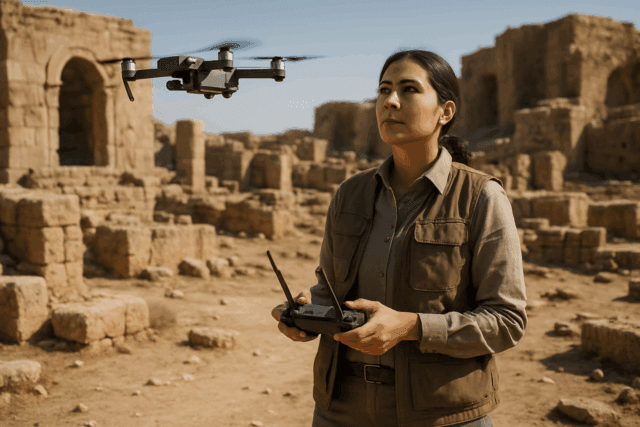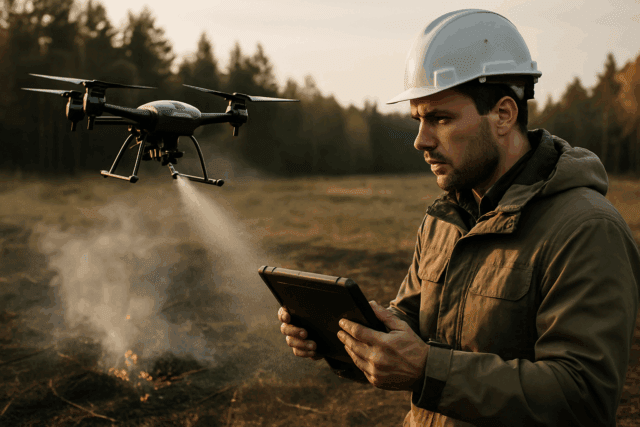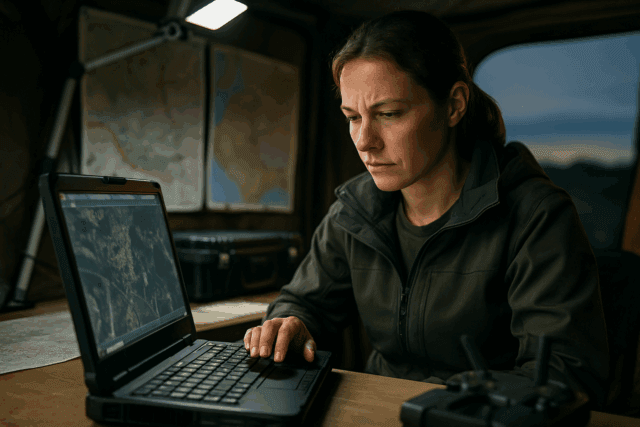Drone filmmaking has revolutionized the visual media landscape, offering filmmakers and content creators unprecedented access to breathtaking aerial perspectives. Whether you’re an aspiring filmmaker, a seasoned videographer, or simply a drone enthusiast, mastering the art of drone filmmaking can elevate your storytelling and set your work apart. This comprehensive guide will walk you through everything you need to know to create stunning aerial footage, from choosing the right drone to mastering essential techniques and understanding UK regulations.
Why Use Drones for Filmmaking?
Drones offer numerous advantages over traditional filmmaking methods, including:
- Cost-Effectiveness: Drones provide a budget-friendly alternative to helicopters and cranes for capturing aerial shots.
- Flexibility and Mobility: Drones can easily navigate tight spaces and access locations that are difficult or impossible for traditional equipment to reach.
- Unique Perspectives: Drones enable filmmakers to record unique and sweeping views from above, adding depth and visual impact to their projects.
- Time Efficiency: Drones allow filmmakers to capture dolly or complex crane shots in minutes, saving time and resources.
- Stability and Smoothness: Modern drones are equipped with advanced gimbal stabilization systems that ensure smooth, shake-free footage, even in windy conditions.
Choosing the Right Drone for Filmmaking
Selecting the right drone is crucial for achieving your desired filmmaking results. Consider the following factors:
- Camera Quality: Look for drones with 4K or higher resolution, a large sensor size, and high dynamic range for better low-light performance.
- Gimbal Stability: A 3-axis gimbal ensures smooth, shake-free shots, even in windy conditions.
- Battery Life and Range: Longer flight times (at least 25-30 minutes) and extended control range allow for more flexibility.
- Obstacle Avoidance: Built-in sensors help prevent crashes, while intelligent flight modes enable automated tracking and cinematic movements.
- Size and Weight: Consider the portability and maneuverability of the drone, especially if you plan to film in tight spaces or travel frequently.
Recommended Drones for Filmmaking in the UK:
- DJI Mavic 3 Pro: A flagship drone with a triple-lens camera system, offering unparalleled clarity and detail with its 5.1K/50fps and 4K/120fps capabilities.
- DJI Mavic 3 Classic: A top-tier drone with a Hasselblad camera, delivering exceptional color detail and professional-grade imaging.
- DJI Air 3: Designed for content creation, capturing breathtaking details with dual-camera 48MP photos and 4K HDR video.
- DJI Mini 4 Pro: A compact and lightweight option with a more advanced camera than its predecessors, capable of rotating 90 degrees for vertical video and photos.
- DJI Inspire 2: A popular drone among filmmakers, known for its improved technical capabilities, safety features, and camera options.
Essential Drone Filmmaking Techniques
Mastering these techniques will help you capture stunning aerial footage:
Smooth Movements: Avoid jerky or sudden movements. Use slow and steady motions to create cinematic shots. Ease into movements, avoiding sudden starts and stops.
Optimize Camera Settings:
- Shoot in 4K for high detail and better post-production flexibility.
- Use 24fps or 30fps for a filmic look, and 60fps+ for slow-motion effects.
- Keep ISO low to reduce noise.
- Use the 180-degree rule (shutter speed = double the frame rate) for natural motion blur.
- Use a flat/log color profile for better dynamic range and easier color grading.
Use ND Filters: Neutral Density (ND) filters help manage light exposure, especially in bright conditions. ND8, ND16, and ND32 filters are commonly used for aerial filming.
Plan Your Shots:
- Define the purpose of each shot and how it contributes to the story.
- Use leading lines and symmetry to guide the viewer’s eye and add depth.
- Experiment with altitude changes to create a dramatic effect.
- Consider specific movements and maneuvers, such as tracking shots, aerial pans, and revealing shots.
- Pre-visualize your shots and sketch them out to save time and get better results.
Master Basic Aerial Shots:
- The Pan: Pick a fixed object to shoot, and slowly pan from left to right in a straight line.
- The Forward Reveal: Fly forward and slowly tilt your camera up or down to reveal an object/landscape.
- The Dronie: Start by hovering at eye-level and fly the drone away and up.
- The Orbit: Circle around a fixed point (can be you, or a tree, or some other object).
- The Birds-Eye-View Shot: Capture a scene directly from above.
Utilize Automated Flight Modes:
- Waypoints: Set a flight path for repeatable shots.
- Orbit Mode: Circles a subject for an epic cinematic look.
- Follow Mode: Automatically tracks moving subjects for dynamic aerial shots.
- ActiveTrack: Helps maintain precise control and track subjects.
- Point of Interest: Helps maintain precise control and focus on a specific point.
Fly During Golden Hour: Shoot during the hour after sunrise and the hour before sunset for soft, warm light.
Keep Your Framing Simple and Clean: Avoid clutter and distractions in your shots.
Practice Piloting Skills: Practice flying backwards, performing flyovers, side-slides, and tracking shots.
Embrace Simplicity: Focus on the suspense of not revealing the subject in the first frame, the creative decision to point the camera toward or away from the sun, and the depth created by having layers in the composition between the camera and the subject.
Editing and Post-Production Tips
After capturing aerial footage, the editing process brings your shots to life.
- Use professional software such as Adobe Premiere Pro, Final Cut Pro, or DaVinci Resolve to enhance your videos.
- Apply color grading to achieve a consistent and cinematic look.
- Stabilize any shaky footage.
- Add transitions to create a smooth and seamless flow between shots.
UK Drone Laws and Regulations
Operating a drone in the UK requires compliance with the regulations set by the Civil Aviation Authority (CAA). Here’s a breakdown of the essential rules:
Registration:
- Register as a drone operator if your drone weighs 250g or more or is equipped with a camera.
- Display your operator ID on your drone.
- Obtain a Flyer ID by passing a basic theory test if you are flying a drone over 250g.
Operational Categories: Understand the three categories of drone flights: Open, Specific, and Certified.
- Open Category: For low-risk flights, where you can operate without needing an Operational Authorisation.
- Specific Category: Higher-risk flights that require operational authorisation from the CAA.
Flying Restrictions:
- Keep your drone within your visual line of sight (VLOS) at all times, up to a maximum of 500m (unless you hold an exemption).
- Fly at a maximum height of 120 meters (400 feet) above ground level.
- Avoid flying over congested areas and maintain a safe distance from people, vehicles, and buildings.
- Do not fly in airport flight restriction zones without permission.
Insurance:
- Commercial drone operators must have valid insurance coverage that meets the requirements set by the EU Regulation (EC) No 785/2004.
- Public Liability Insurance: An appropriate level of ‘Public Liability’ cover must be held for both non-commercial and commercial drone operations, including events and filming. The minimum level of protection is £5 million.
Permissions:
- Obtain permission from the landowner to take off and land your drone.
- Ensure that you have permission if you are filming people at an event.
Key Considerations for Filming in the UK:
- Filming Permits: Generally, if you are filming anything commercially, you will need to obtain a filming permit in order to use a drone above council land and property.
- Privacy Laws: Be mindful of privacy laws and the General Data Protection Regulation (GDPR) when filming people.
- Sensitive Areas: Avoid filming in sensitive areas like schools, government buildings, or private properties without consent.
- Weather Conditions: Avoid flying in bad weather (high winds, rain, etc.).
Drone Insurance in the UK
Protecting your drone and business with adequate insurance is crucial. Here are some key aspects of drone insurance in the UK:
- Public Liability Cover: Covers damages to property or injury to a member of the public.
- Hull Coverage: Protects your drone from physical damage.
- Equipment Cover: Covers accessories designed for use with drones, such as filming, scanning, and mapping equipment.
- Cyber-Attack Cover: Protects against someone taking control of the drone whilst in flight.
- Invasion of Privacy Cover: Protects against claims of invasion of privacy or breach of data protection.
Recommended Drone Insurance Providers in the UK:
- Moonrock Insurance (partnered with Coptrz)
- FlyCovered
- photoGuard
- MFE Insurance Brokerage
Starting a Drone Filmmaking Business in the UK
The drone industry in the UK is rapidly growing, presenting significant business opportunities. Here’s what you need to consider when starting a drone filmmaking business:
Business Opportunities:
- Aerial photography and videography for weddings, businesses, and the film and TV industry.
- Providing drones for construction, agriculture, and other industries for inspections and surveys.
Legal Issues:
- Comply with UK drone laws and regulations.
- Obtain necessary licenses and permissions.
- Ensure you have adequate insurance coverage.
Business Fundamentals:
- Plan your finances, targets, and timescales.
- Develop a strong marketing strategy.
- Master the specific requirements of your chosen industry.
Conclusion
Drone filmmaking offers exciting possibilities for capturing stunning aerial footage and enhancing visual storytelling. By understanding the essential techniques, choosing the right equipment, and complying with UK regulations, you can create breathtaking aerial shots and elevate your filmmaking to new heights. Whether you’re pursuing drone filmmaking as a hobby or a business, continuous learning and practice will help you master this dynamic and innovative art form.





